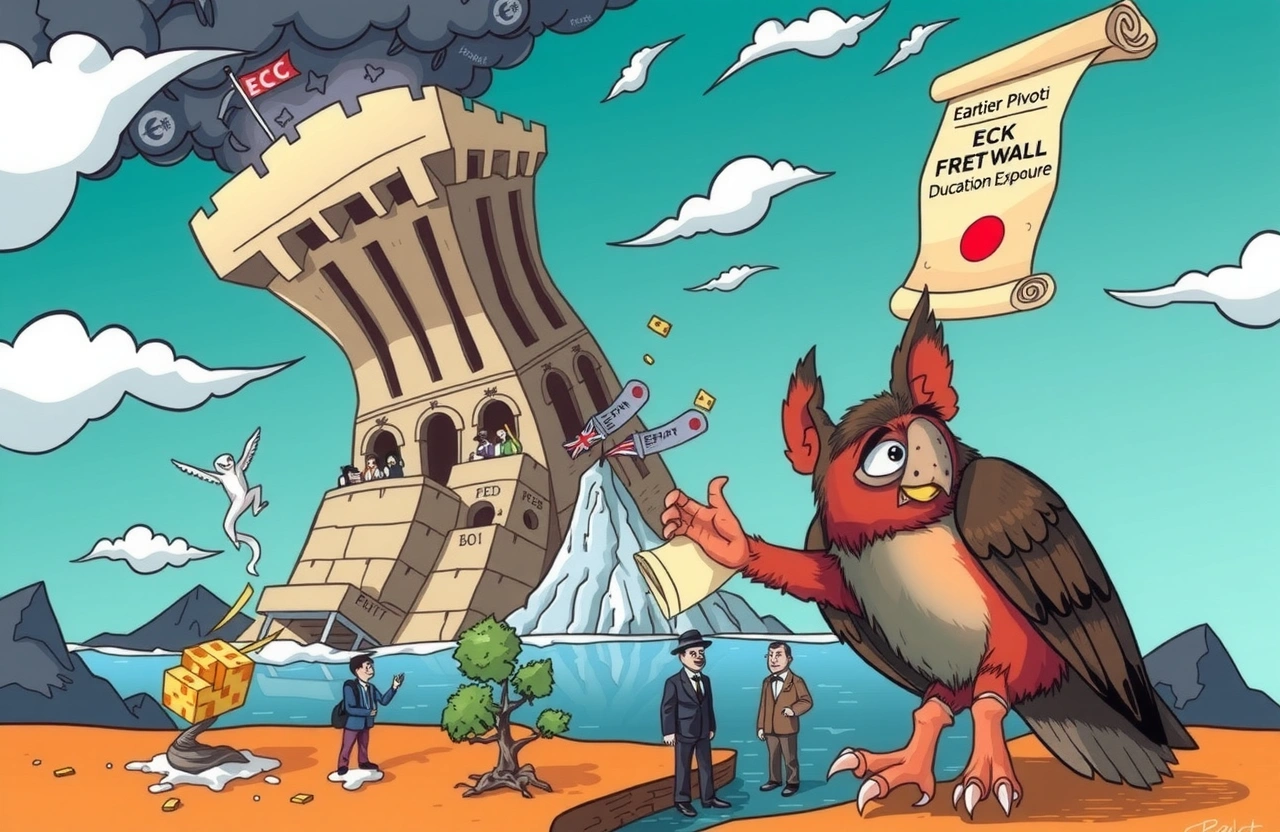The Gathering Storm in Global Economies
A perfect storm of cooling inflation, softening labor markets, and contracting manufacturing activity suggests monetary authorities may accelerate their policy reversal timeline. While consensus forecasts project cautious rate cuts in late 2024 or 2025, these emerging indicators reveal significant vulnerabilities that could force an earlier monetary shift. Markets continue underpricing how rapidly deteriorating conditions could compel central banks to prioritize growth over inflation concerns. We’ll examine the constellation of warning signals suggesting this monetary shift might arrive 6-12 months ahead of current expectations, potentially catching investors off guard.
Deflationary Ghosts in Key Economies
China’s ongoing consumer price declines (-0.8% in January 2024) and Europe’s flirting with negative territory expose persistent weak demand that could spread globally. Germany officially entered recession last quarter with significant implications for ECB policymaking. Meanwhile, plunging freight rates and industrial metal prices hint at weakening global trade alongside concerning statistics:
- Container shipping costs dropped 80% from pandemic peaks, indicating cooling demand
- Copper prices declined 15% year-to-date, signaling industrial slowdown
- Global manufacturing PMI remained below growth threshold for 14 consecutive months according to JP Morgan Global PMI data
Mounting Pressure From Government Debt Dynamics
Sovereign debt burdens create powerful incentives for policy reversal. With U.S. interest payments now consuming 17% of tax revenue and Japan dedicating 25% of its budget to debt service, coordination between fiscal and monetary authorities intensifies. This uncomfortable arithmetic suggests political urgency may override central bank independence.
The Fiscal Dominance Tipping Point
Quantitative tightening becomes unsustainable when debt servicing costs approach critical thresholds. History shows that when governments hit debt walls, central banks eventually capitulate to pressure. Investor Ray Dalio noted in a recent LinkedIn post: “When debt is high and growth slows, maintaining interest rates becomes politically impossible.” Countries now facing this dilemma include:
- United States: Debt-to-GDP at 123% with 2-year yields above 4.5%
- Britain: Debt interest reached £111bn last year
- Italy: Debt servicing consuming 20% of government revenue
Financial Stability Concerns Escalating
The banking sector flashpoints emerging from prolonged high rates create pressure for a monetary shift. Commercial real estate vulnerabilities continue mounting while regional bank balance sheets deteriorate. Credit conditions tighten irrespective of central bank signaling, creating a self-reinforcing credit crunch.
Commercial Real Estate Time Bomb
With $1.5 trillion in commercial mortgages maturing by 2025 amidst valuations down 35% from peaks according to Green Street Advisors, rising delinquencies threaten financial system stability. Banks facing simultaneous unrealized bond losses and CRE exposure become reluctant lenders just when the economy needs counter-cyclical support. Regulators and bankers increasingly push for lower rates to avoid systemic failures after recent regional bank collapses demonstrated contagion risks.
Labor Market Cracks Widen
The inflexion point from robust job growth to concerning deterioration appears nearer than reports suggest. While unemployment rates remain low, underlying metrics reveal fragility that could accelerate monetary accommodation. Key leading indicators including temporary staffing declines, shrinking work weeks, and rising jobless claims suggest cracks beneath the surface.
Hidden Unemployment Signals
Buried in employment reports, concerning patterns emerge including:
- Full-time job losses in Canada, Australia, and Eurozone confirming broader weakness
- U.S. unemployment including discouraged workers exceeds 7% (U6)
- Persistent youth unemployment above 30% in multiple European countries
Major corporations like UPS, Meta, and Citigroup announcing deep cuts despite so-called labor shortages reveal fundamental demand weakness that could overwhelm central banks’ inflation focus.
The Political Imperative Amid Elections
With voters in major economies expressing intensifying discontent over cost-of-living pressures, political leaders will increasingly demand monetary shift support. Over 40 countries including major economies like India, Mexico, the UK, and potentially the U.S. hold elections in 2024-25. Leaders facing potential ouster will exert immense pressure on independent central banks.
Rate Pain Down Ballot Consequences
Current polling shows economic anxiety dominating voter concerns across democracies. Mortgage stress, small business loan defaults, and rising unemployment translate to ballot box consequences. Governors and legislators increasingly vocalize what central bankers cannot: current policy rates threaten economic implosion. Recent unprecedented interventions include:
- U.K. Chancellor warning BOE about ‘overcorrecting’
- Argentine President Javier Milei implementing radical dollarization to escape central bank policy failures
- White House officials quietly urging caution about overtightening according to Wall Street Journal sources
The Case for Earlier Than Expected Pivot
Three key elements may converge to accelerate the monetary shift: the collapse of inflation psychology, market dysfunction forcing intervention, and a sudden realization among policymakers that they’ve overshot neutral rates based on outdated supply shock interpretations. When this recognition occurs, central banks may pivot dramatically to avoid credibility damage from overshooting.
Dismantling Peak Rate Narratives
Fed officials themselves project an unsustainable long-run policy rate below 3%, yet markets price rates remaining above 4% through 2026. This gap represents either economic denial or foresight about necessary adjustments. Bank of Canada Governor Macklem admitted significant uncertainty in neutral rate calculations, which suggests policy has likely been restrictive for months. Central bankers face stagflation pressures requiring earlier reversal than during conventional cycles to preserve limited ammunition. They face the stark choice: pivot on their terms soon, or be forced into emergency actions later.
The evidence suggests monetary authorities may soon abandon restrictive stances as economic headwinds become irresistible. Keep vigilance on data streams – particularly inflation expectations, credit spreads, and service sector indicators – as these might herald policy changes sooner than forecasts predict. Central banks risk significant credibility damage for acting too late, making proactive pivots increasingly probable. The time has come to prepare portfolios for unexpected easing through duration extension and quality growth exposure that outperforms when the shift arrives. Monitor employment reports and treasury market signals weekly, because when the pivot comes, it will likely begin subtly before becoming a powerful market redeeming tide.



